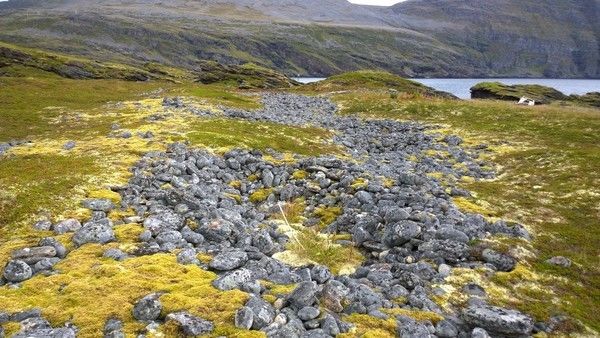Slab-line pits are oval or rectangular pits, where the pit walls and floor are aligned with stone slabs. The pits were used for the extraction of oil from the blubber of marine mammals. This oil was in turn used in trade. Excavations of various pits show that they were in use from around 100-1000 CE. The most intensive period of use, however, was between 600-900 CE. A total of 88 slab-lined pits have so far been registered in the municipality of Måsøy. In Storvika in the southwestern part of Havøya (the island where Havøysund is situated), there are multiple pits which have a diameter of approximately 2 metres. They seem too small for being houses
The oil produced in the pits was applied to woodwork- and ropes, in addition to bein an important component in leather prosessing. It is uncertain as to why use of the slab lined pits stopped, but a probable cause is political changes with trading partner. The Norse chiefdoms in northern Norway lost their political power, and became a part of a unified Norway, thus altering the trade networks in the region. The trade focus along the coast in Finnmark seems to have shifted towards the interior regions.
No slab-lined pits have been found south of Tromsø, and there is a big increase in number of these pits north of the Lyngen fjord. The pits have been regarded as ethnical markers since they do not occur in the traditional Norse areas south of Lyngen.



